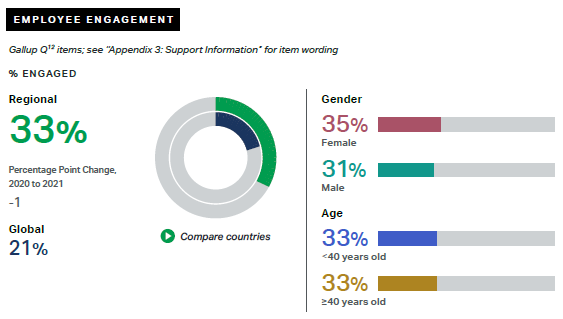As of November 2022, the staffing shortage in five of the biggest market sectors in the US exceeds 40%. Other countries, including Canada, face similar problems, partly because of the Covid-19 pandemic and partly because more people are now leaving the job market than entering it.
This past holiday season, I had a very personal brush with the staffing shortage currently threatening businesses across virtually every industry. My spouse, who works in a managerial position in a customer-facing role, lost all of his holiday time off due to a persistent labor shortage in his company. Despite the best intentions of higher management, other managers, and his own staff, he simply couldn’t cover his store’s hours without working most of them on his own—at the expense of time with me and our toddler.
We’re fortunate that all we lost was time off since the staffing crisis is also eviscerating workforces in much more vital industries like healthcare and aerospace. However, our situation was an alarming symptom of an issue that is both widespread and ongoing. With teams stretched to the limit, how do we navigate a staffing shortage, deliver on our brand promise, and survive this economic hurdle?
How Bad Is The Staffing Shortage In 2023?
In a word? It’s bad. According to the US Chamber of Commerce, the workforce shortage has severely affected five crucial market sectors and in November 2022, it reached 60% in retail and 50% in the hospitality industry and manufacturing:
A similar situation is observed in Canada, where the number of vacant positions still exceeds at least 20% (close to 50% in retail), although the good news is this trend is downward:
Why is there a staffing shortage?
Of course, each industry and each country has its own reasons, but globally, there are two major trends. First off, currently, more people are exiting the labor market than entering it. According to Forbes, during the early days of the coronavirus pandemic, in the third quarter of 2020, nearly 30 million baby boomers left the job market and retired, according to the Pew Research Center.
Another study conducted by Coventry showed that over 75% of the respondents were planning to retire early. Forbes calls this trend the Great Retirement, which is a reference to the Great Resignation term that describes the elevated rate at which U.S. workers resigned from their jobs. The Great Resignation started in the spring of 2021.
Secondly, the Covid-19 pandemic is also responsible for the global workforce shortage, especially when it comes to healthcare workers and other frontline employees. The study conducted by the US Chamber of Commerce shows a sudden surge in unemployment rates between 2020 and 2021.
Today, thankfully, the situation is stabilizing, but we still have to struggle with the fallout of the pandemic.
And we cannot neglect other “less-hyped” reasons for workforce shortages, namely:
- Employee burnout (two-thirds of full-time workers have experienced burnout during their careers)
- Lack of flexible schedules (people no longer want to work 9 am to 5 pm; long hours are discouraging, and remote work and flexible work time are now on the rise)
- Staff shortages (it’s a vicious cycle—because there are so many vacancies, employees have to work longer and harder, which triggers them to quit their jobs due to the impact of burnout on their mental health)
How Businesses Are Adapting
Obviously, businesses need to do whatever they can to combat workforce shortages and, if possible, go back to pre-pandemic levels of unemployment. Statistics Canada provides valuable insight into how Canadian companies are adapting to the current market situation (data from 2022):
- Close to half of them (46% of answers) plan to increase the wages of new employees
- Almost two-thirds (64%) plan to increase the wages of existing employees
- 12% plan to offer signing bonuses or incentives to new employees
Other solutions that are worth mentioning are the following:
- Remote work (13%) and flexible schedules (34%)
- Providing training and opportunities to take other positions within a given company (23%)
- Adopting digital technology (9%)
These strategies surely can be effective! The Washington Post mentions the case of a small ice cream parlor in Pittsburgh. Initially, the company was looking for scoopers and was offering them $7.25 an hour plus tips. This offer has not resulted in a single application for almost a quarter. Eventually, the owner decided to increase the starting wage to $15 an hour, plus tips. The parlor was suddenly flooded with applications. The company received over 1,000 applications!
Strategies For Surviving On A “Skeleton Crew”
The study provided by Statistics Canada shows six typical ways of dealing with staffing shortages. However, if you are creative and flexible about this problem, you can do much more. Let’s have a look at some non-standard options.
Chatbots and voicebots
Estimations are these intelligent assistants can deal with up to 70% of customer queries. Chatbots are extremely useful when it comes to answering repetitive questions (e.g., about opening hours or product availability) and providing straightforward information (e.g, about the order status or the return policy).
And because chatbots frequently use machine learning to increase their efficiency, they can be used in almost any market sector, including retail, e-commerce, telemedicine (the healthcare industry in general), travel, logistics, human resources, IT, marketing, real estate, media providers, and many more sectors, both B2C and B2B.
If this is something you haven't explored yet, make sure to read our review of some excellent tools you can use to deploy chatbots for customer service.
Employee feedback
According to Gallup's recent State of the Global Workplace 2022 Report, only 33% of employees in North America feel engaged in their work:

Lack of engagement is a severe problem that affects your employee’s work satisfaction and retention. Unsatisfied employees are prone to look for a different job. The best way to deal with this problem is by improving employee feedback in your company. There can be hundreds of reasons behind the lack of engagement, and there is no room for guesswork.
You simply have to ask your employees what can be done for them to increase their satisfaction and engagement. Ensure your company provides both official and unofficial ways of sharing feedback (remember—no one should be punished for expressing how they feel in the workplace!).
Mind you, the Global Culture Research Report conducted in 2022 in Canada showed that one in five Canadian workers does not feel like their managers are encouraging transparent communication. Make sure that’s not how employees think about you or your managers!
Employee training
Herb Kelleher, CEO, and chairman emeritus of Southwest Airlines, once said, “You don't hire for skills, you hire for attitude. You can always teach skills.” That’s 100% true! Don’t focus on hiring people with just the right set of skills or experience. Instead, look for people who are willing to learn and are enthusiastic about their work.
Create a training and career development program in your company, and give your employees an opportunity to develop in different directions, depending on what the company needs and what they want to do. This way, in a short time, you can mitigate the impact of labor shortage in your company.
I discussed this topic thoroughly in a previous article, How To Build A World-Class Customer Service Team.
Remote work
Do all of your employees really have to be in the office every day? The answer is probably not. Especially today, thanks to access to the cloud, your employees can do the majority of their everyday duties remotely.
Of course, it takes some effort (as in, getting the right IT solutions in place), but the juice is definitely worth the squeeze! And it's what your employees increasingly expect—according to FlexJobs’ Career Pulse Survey (also conducted back in 2022), 65% of respondents want to work remotely full-time, and 32% want a hybrid work environment. If possible, give them such an opportunity. In the same way, you can also open your company’s doors to part-time workers and hybrid workers.
Short-term workers
Does your company experience peaks in workload during a specific time of the year (e.g., during Christmas)? Or maybe you suffer from a seasonal lack of workers (e.g., during summer vacation)? In both these situations, short-term workers are your best bet.
Such workers are frequently very experienced (even when it comes to patient care and other clinicians) and have many useful skills (e.g., adaptability and willingness to learn). You can look for short-term workers on your own or work with one of the staffing agencies. Both solutions have their pros and cons, but that’s a story for a different article.
Outsourcing
This point can be tricky, but it’s definitely worth considering. Outsourcing is a very popular business model, and today, you can outsource pretty much everything, from marketing services to production and manufacturing workers.
Customer service, for example, is one department that frequently gets outsourced, but that can come with its own CX pitfalls. Ensure you go into it with a clear strategy, list of pros and cons, and assessment of potential impacts to CX.
The key to success lies in working with a proven and trusted partner who understands your company, has high working standards and concentrates on doing the best job possible.
If you've been considering this option, here's a list of ten great customer service outsourcing companies to look into.
Additional benefits and initiatives
Never underestimate the power of appreciation. Of course, financial benefits are always welcome, and that’s the best way to show that you care about your employees, but there are other ways of showing that you value them, e.g., by providing flexible working conditions, offering additional time off (e.g., as a thank-you for extra hours), or giving access to education and training opportunities.
Try different hiring strategies
What do you do to attract more employees? Do you exploit all available channels, including job websites, social media (don’t neglect Facebook Groups!), and word of mouth? Be creative about the hiring process.
For instance, you can offer a bonus for everyone who recommends a worthy candidate that you decide to hire. You can also try working with high schools and universities (some of them have job boards for their students) or other student job networks. Lastly, you can cooperate with an employment agency. Explore every available option before you conclude you cannot hire the right talent.
And then, there’s the question of your job ads. Are they attractive? Or maybe they are dry and filled with cliches no one wants to read? If you need help with creating engaging job ads, find an HR consultant or a copywriter who specializes in this sector and give your ads a boost.
Lastly, don’t forget to include the information about the salary. According to a new survey conducted by Adobe, among upcoming US post-secondary and recent graduates, 85% of them reported they are "less likely to apply for a job if the company does not disclose the salary range in the job posting."
Workforce Shortage CAN Be Overcome!
I don't think anyone doubts that the workforce shortage is a severe problem for thousands of companies out there. But with a bit of flexibility and creativity, your company can deal with it, at least partly. Implement some self-service solutions (e.g., a chatbot, customer panels, or a knowledge base), and provide your workers with flexible working conditions. This way, you will be able to stay afloat with a dedicated and proven team, even in difficult market conditions.
I hope the suggestions you’ve just read will be useful in your situation. If you want to know more, sign up for our newsletter. Every week, we publish tons of practical information on customer service, running a company, and providing high-quality CX. We’d love to have you as a subscriber!








